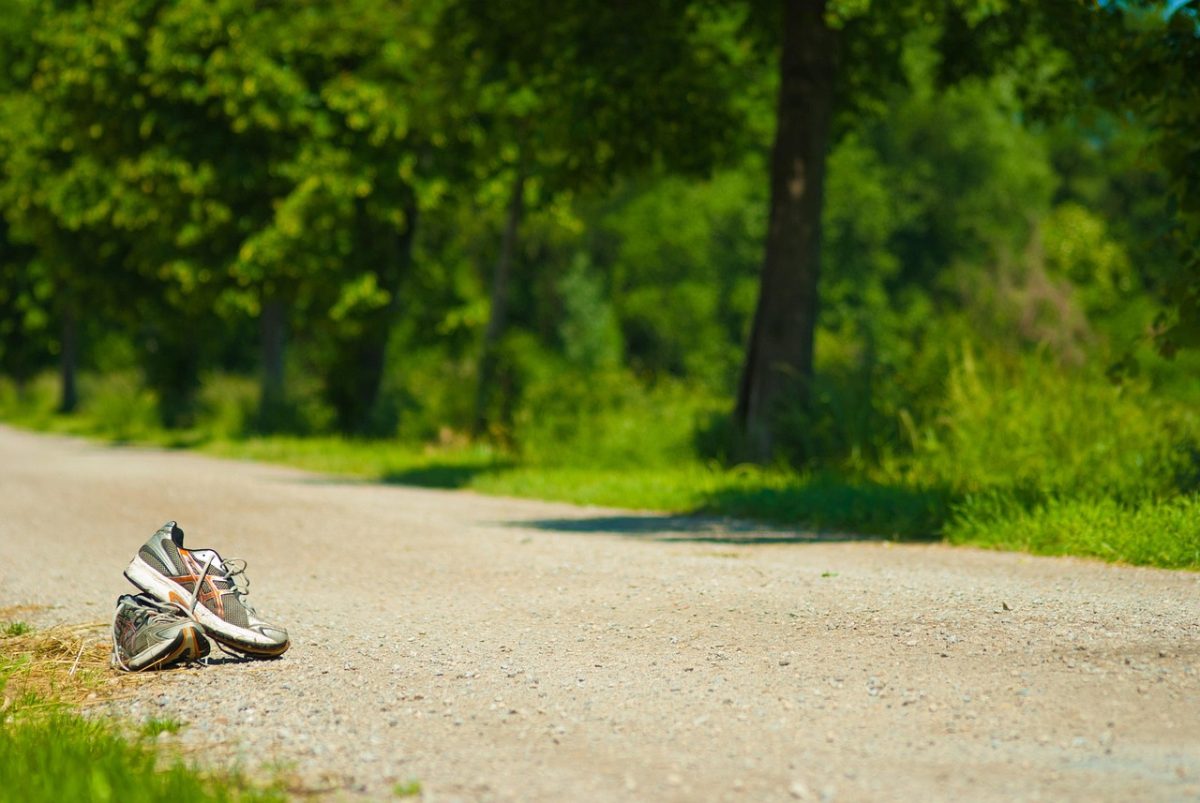- What is grounding?
- Is barefoot grounding good for you?
- How do grounding shoes work?
- Are grounding shoes the same as barefoot shoes?
- Top Picks: Grounding Footwear
- Top Picks: Barefoot Shoes (Not conductive, but great for foot health)
- What does grounding footwear do for your feet?
- Why are some podiatrists against barefoot shoes?
- Grounding Footwear: Final Thoughts
What is grounding?
Let’s clear up any confusion. Grounding can mean different things depending in different contexts. In today’s context, talking about grounding footwear, it refers to literally connecting with the earth’s electrical charge through physical touch or materials that conduct electricity (e.g., the soles of grounding shoes).
Some people also call this “earthing,” and it’s thought of as a very physical process. This connection is believed to bring benefits to both body and mind, which we’ll cover shortly.
You may have also heard of grounding as a technique for anxiety or emotion regulation. That is about bringing awareness to the present moment—through your senses, your body, and your surroundings.
It’s more of an internal, mental practice, while “earthing” is a physical one. Still, there’s crossover: both help foster connection to your environment, and both may support your well-being.
But here, we’re focusing on the ins and outs of grounding footwear—aka earthing shoes or barefoot shoes.
Not feeling convinced? Don’t worry. We’ll explore whether grounding footwear can actually help us—physically or mentally—by looking at research evidence.
You’ll also find out how grounding shoes work, what they might mean for your foot health, and what brands are worth looking into.
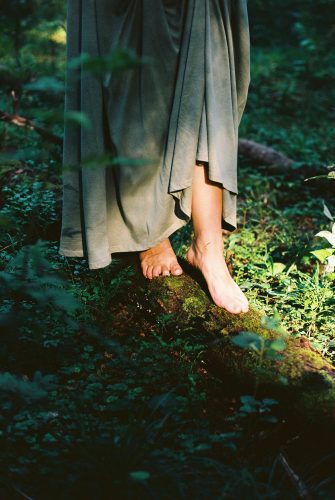
Is barefoot grounding good for you?
While only small-scale research exists on earthing and barefoot grounding, early scientific studies do show some promise. For example, research involving massage therapists found that both objective (measurable) and subjective (self-reported) stress, pain, and depression improved after several weeks of grounding (Healthline).
Other studies on people with conditions like diabetes reported faster wound healing—another measurable, physical outcome (Healthline).
So while the evidence isn’t large-scale or definitive yet, the potential mental and physical benefits are promising. That said, these studies are still relatively new and may not reflect outcomes across the broader population. Stronger replication studies are needed to confirm the reliability of these effects. Still, it’s a good start.
Although my background is strongly rooted in science, my intuition tells me that the benefits of reconnecting with the Earth through grounding make sense. After all, humans lived in harmony with nature—growing food, building shelter with soil, walking barefoot, bathing in natural waters—for far longer than we’ve lived this modern life.
I truly believe that modern tech working alongside nature’s tech could be a bit of a eureka moment.
Which brings me to…
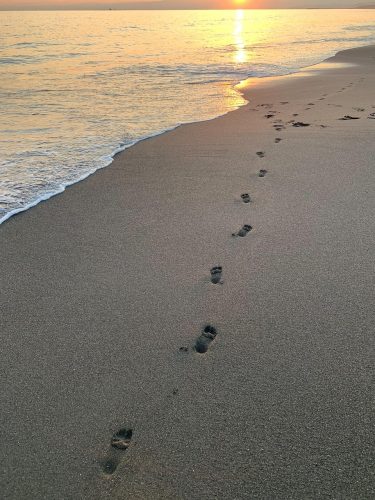
How do grounding shoes work?
Grounding footwear works in a similar way to walking barefoot on grass. The Earth’s surface holds a negative electrical charge, and the theory is that when our bare skin touches the ground, we absorb electrons from that charge.
Same goes for other contact points—like lying on the grass or running your fingers through soil. The goal of grounding is to lower your body voltage—basically, the amount of electrical charge your body carries. The idea is to sync more closely with the Earth’s natural charge. According to the principle of charge neutrality in physics, this natural charge is zero.
Grounding shoes—or barefoot shoes with conductive soles—help mimic this process. They work by conducting the Earth’s negative charge up through your feet, helping to lower your body’s electrical charge. This may help reduce inflammation and promote overall physical and mental well-being.
We’ve already touched on some benefits of grounding, but it gets even more interesting. Scientists are now exploring how a lack of earthing might be linked to chronic inflammation and illness in modern society. The theory is that free radicals—unstable molecules caused by things like fried food, pollution, alcohol, or stress—create oxidative stress that damages cells. Grounding may help by neutralising these free radicals with negatively charged electrons absorbed from the Earth.
And in today’s world, you don’t have to walk barefoot in a field to experience this. You can even use grounding devices like grounding mats or earthing bed sheets to stay connected while you work or sleep.
It’s a literal connection to the Earth—a reminder that we are part of it, and it’s part of us.
But as civilization advanced, we gradually built more and more barriers between ourselves and the Earth—shoes with thick rubber soles, working indoors, and living in sealed homes.
And while we’re grateful for these comforts, they’ve come at a cost: disconnection.
If you zoom out, you’ll see that it’s only in the tiniest sliver of human history that we’ve lived so far removed from the Earth beneath our feet.
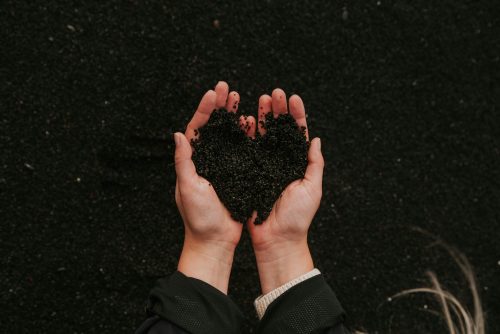
Are grounding shoes the same as barefoot shoes?
Not quite—though they often overlap.
Barefoot shoes are designed to mimic the natural shape and movement of our feet. They usually have minimal padding, zero drop (i.e., no heel-to-toe slope), and a flexible sole to allow for natural foot function.
Grounding shoes instead focus on reconnecting you to the Earth’s electrical charge. They’re made with conductive materials—like carbon or copper threads in the sole—that allow electrons from the ground to flow into your body.
Some grounding shoes are barefoot-style, meaning you can get both benefits in one pair. But not all barefoot shoes are grounding shoes. So if you’re looking to reap the electrical benefits, make sure the shoes are specifically labelled as grounding or earthing footwear.
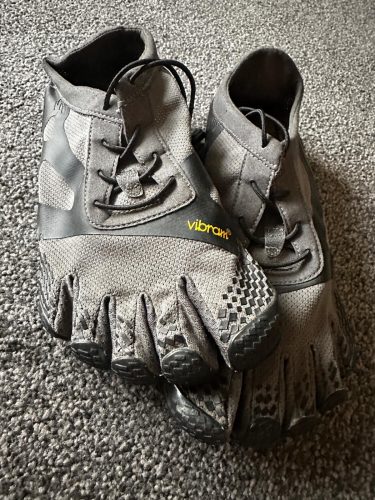
Best Grounding Footwear & Barefoot Shoe Recommendations (Tried, Tested… or Tantalising)
If you’re thinking of trying grounding or barefoot footwear, you don’t need to spend hours scrolling — I’ve found a few options that can bring either literal earth connection, or that barefoot feeling (or both!).
As always, I only recommend products I’ve used or would genuinely consider myself. Most of these are on Amazon, so they’re easy to get from device to door.
Top Picks: Grounding Footwear
These shoes contain conductive elements (like copper) in the soles to help you connect to the Earth’s charge — even when you’re not padding barefoot on soil.
This post may contain affiliate links, from which I may earn a small commission at no extra cost.
- Grounding Clogs (Budget-friendly + Slipper vibes)
If you like crocs, you’ll probably like these. A similar vibe, these grounding clogs a conductive plug on the sole — perfect for indoor use or light pottering. - Grounding Shoes with Copper Soles (Barefoot-friendly)
Looks like a minimalist trainer, but with conductive copper in the soles to support grounding outdoors. Barefoot style, so you can reap the benefits for foot health. - Grounding Trainers
If you want something grounding and more supportive, these grounding shoes are made to be conductive yet have greater support for sporty activities. Just make sure to wear conductive socks to let them do their work!
Top Picks: Barefoot Shoes (Not conductive, but great for foot health)
Barefoot shoes don’t ground you electrically — but they do reconnect you with natural foot movement.
- Hobibear Barefoot Shoes
Unisex and great for walks, gardening, or even running. These are reputable best-sellers and come in sporty or more casual-looking styles. - Water Barefoot Shoes
A solid, affordable barefoot-style shoe designed with water and wild swims in mind. These sports-style, multifunctional barefoot shoes come in various colours and have thousands of good reviews. - Vivobarefoot (Sleek + High-Quality)
Although reviews are mixed around their durability, if you’re ready to invest, these are genuinely barefoot-feeling and quite stylish.
What does grounding footwear do for your feet?
While the wider benefits of grounding may affect your whole body, your feet can also directly benefit:
- Improved circulation: Direct contact with the Earth may help improve blood flow in the lower extremities.
- Reduced inflammation: The anti-inflammatory effects of grounding could help ease pain in sore or overworked feet.
- Nervous system regulation: Some people report a calming effect or reduced foot tension after grounding.
- Support for natural movement: When paired with a barefoot design, grounding shoes also support foot strength, stability, and proprioception.
All this helps us have a gentler, more connected relationship with our feet—and the world beneath them.
Why are some podiatrists against barefoot shoes?
Barefoot shoes aren’t for everyone. Many podiatrists have fair concerns, especially for people with pre-existing foot problems.
Some common concerns include:
- Lack of arch support: For people with flat feet, plantar fasciitis, or overpronation, these shoes can worsen symptoms if not transitioned to gradually.
- Increased risk of injury: Going from cushioned, structured shoes to barefoot styles too quickly can lead to strain on the Achilles tendon, calf muscles, or foot joints.
- Need for adaptation: If, like me, you tend to experience a lot of pain after walking barefoot for extended periods – take it easy. Our feet need time to adapt to barefoot-style walking or running. Most podiatrists agree that slow, mindful transitions are key.
That said, many foot health professionals support barefoot shoes for strengthening the intrinsic muscles of the foot—mainly when used appropriately.

Grounding Footwear: Final Thoughts
Grounding doesn’t have to mean hugging trees barefoot in the woods (though, no judgement if that’s your thing, I’m open to trying it).
It’s about reconnecting to something in our nature — the ground beneath us, the bodies we live in, and the way we move through the world.
With all the barriers to this around us, grounding footwear gives us a way to plug back in without ditching the comforts of modern life.
Have you tried out grounding footwear? If so, I’d love to hear if it works for you and if you have noticed any benefits. Drop me an email or comment below! If you’re keen to find out what I’m all about – visit my ‘About Me’ page via this link or check out my blog on the trending topic of mushroom coffee.
